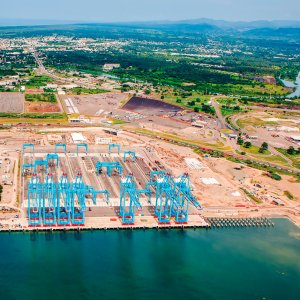Investment Consultancy Sees Big Upstream Opportunity

STORY INLINE POST
Q: What opportunities are coming to infrastructure development from the introduction of the bidding rounds?
A: Upstream is the single most important activity of the oil industry and farm-outs especially present a great opportunity but there is a great deal of infrastructure that must be built for the development of some of these fields. When Marcos y Asociados estimated the potential additional private investment the opening of the oil and gas industry represented, we projected a necessary US$6billion to US$10 billion for the development of each of the deepwater blocks. There are requirements for subsea infrastructure, including valves and tiebacks, which Mexico has not yet developed. When oil companies start developing these fields, there will then be an incentive for manufacturing companies to expand their expertise to this kind of equipment.
It is important to remember that a legal responsibility of the previous state monopolies, both in electricity and oil and gas, was to supply the local market regardless of the cost. Rather than being a business opportunity, this was a legal obligation for CFE and PEMEX to supply the domestic market. In Mexico, we have an average of two days’ storage capacity for gasoline and diesel. There is no natural gas storage capacity and the only availability is that in the pipelines. Now, investors are pursuing projects to develop storage capabilities due to the seasonality of supply and demand. This will allow production of natural gas to increase because even in seasons of low demand, the storage capabilities will allow continued profitability.
Q: How will private companies participate in the importation of gasoline and diesel?
A: Excess oil and gas production in the US means prices are low. When buying there and selling in Mexico, the margin improves. We are importing around 600,000b/d of gasoline and diesel and there are authorized import permits for a further 800 million barrels but we can’t capitalize on that because the appropriate infrastructure is not yet in place and the present infrastructure is owned and operated by PEMEX, meaning that tariffs are set based on PEMEX’s capacity and availability. Private investors must build their own infrastructure before the market can become truly dynamic.
Another aspect to consider is that price margins are extremely small or even negative today because the Ministry of Finance established the maximum price of gasoline and diesel based on PEMEX’s transmission, importation and distribution costs. The NOC's costs are low for commercial purposes so there is no margin for private companies, especially given the IEPS, which is designed to absorb the difference between the reference price and importation and distribution costs with respect to the maximum price. In 2018, the law states the government will no longer regulate the price of gasoline and the market will be liberated. Depending on international pricing at this point, there will be greater competition and PEMEX will have to adjust to this new reality.
Q: What area of energy infrastructure do you think holds the most potential?
A: I think the distribution and commercialization of fuels and electricity will be most important. Commercial opportunities can now emerge for electricity and oil and gas, whereby operators can seek out companies with additional capacity that is not being dispatched and act as the intermediary in purchasing this and supplying it to the public.
PEMEX’s available pipeline and terminal infrastructure is strictly the minimum required. Additional investment is needed in product pipelines in transportation and distribution, whether that be at the ports or close to the borders. The market is importing over 50 percent of the country’s consumption but now that anyone can own and operate pipelines, there are several development projects underway.
I expect an increase in the construction of this infrastructure just to satisfy existing demand. One of the most highly consumed fuels in Mexico is liquefied petroleum gas (LPG) and in the past, distributors of this resource have invested in pipelines and terminals to provide PEMEX with the infrastructure that it could not include in its budget. Several facilities were built along the border and on the Pacific and Gulf of Mexico coasts by private investors and these facilities were then leased to PEMEX. Now that they are free to import independently, they are reclaiming this infrastructure. In January, the market was officially opened and in May, all LPG imports were carried out by private investors. Because there is no special tax (IEPS) on LPG, these private investors only had to pay VAT so the situation was extremely beneficial for these players. They quickly captured the market that was previously exclusive to PEMEX.
Q: What are the opportunities for PEMEX to work alongside private companies through PPPs?
A: There is uncertainty at the moment because PEMEX has not yet defined its strategy. For the time being, PEMEX’s intention is to protect its existing assets and it is not considering divesting and allowing the private sector into certain regions. For example, in Baja California, there are port facilities with tanks that may prove beneficial for PEMEX to sell or lease to the private sector and allow it to service the region. However, PEMEX could protect more productive markets, like the central Mexican market, to allow for maximum profitability. Capacity could also be reserved in pipelines that are being built by private investors. The new administration is discussing the strategy and I expect this to be defined before the end of 2016.
Q: How well preserved is the existing energy infrastructure and what risks will private companies encounter with this infrastructure?
A: Firstly, private companies must approach the Energy Regulatory Commission (CRE) to obtain permits and a tariff. There have been intense negotiations between PEMEX and CRE to agree on a tariff that will provide PEMEX with a return on investment for the investment it has made while also fostering the construction of the new infrastructure that is required, allowing the market a reasonable margin. Some tariffs already have been announced for natural gas and oil products but the market’s response remains to be seen. A strategy will then have to be defined that allows PEMEX the greatest profitability as a business. It is difficult for PEMEX to delegate responsibility of a given region or state because it still is responsible for supplying the market, even though this is no longer mandated by law.
Q: To what extent has the private sector expressed interest in being involved in refining infrastructure?
A: In terms of market balance, 50 percent of national consumption is provided by imports, so there is definitely an urgent need for additional capacity. The issue then lies in the need to install new refineries and upgrade the existing ones. The regional market must then be examined to gauge whether there is excess refining capacity in the US and Canada, for instance, because this may not justify installing extra capacity in Mexico.
At some point, PEMEX will have to decide what to do with the existing refineries, the last of which was built in the 1970s. There will be additional investment in refining but rather than focusing on commodities like gasoline and diesel, there will be a focus on the impact for petrochemicals and the chemical industry. PEMEX has upgraded three of its large refineries but the improvements to the remaining three are pending and I do not believe PEMEX will have the budget to carry out the necessary renovations itself. I expect this to be carried out through joint ventures with private investors.
Q: What financing options are available for companies that want to invest in Mexican energy infrastructure?
A: In the US, Master Limited Partnerships (MLPs) have worked well to help the market finance the required infrastructure, especially in the midstream. Mexico will need a great amount of investment just to supply the local market. The government issued the new Fibra E financial vehicle, which is an adaptation of the MLPs, and I expect this instrument will be used to finance some of the additional infrastructure. Waiting for private companies to raise equity creates delays that are mitigated by mechanisms like Fibra E. We need this new instrument to be operational as soon as possible. When PEMEX and CFE define strategies, they can take these to the market and secure additional funds.
Q: How will deepwater benefit the Mexican industry in terms of infrastructure?
A: Mexico does not have the manufacturing capacity to produce most of the specialized equipment needed for deepwater and ultra-deepwater, which means the infrastructure initially must be imported. Most of the subsea equipment must be built specifically for the project that is being developed. Some capacity for this exists in Mexico, which can be seen in the national content requirements of these contracts. There are large international oil companies that have supplied platforms for Africa that were built in Mexico. Therefore, the capacity is there, we just need to wait and see if this can be used to supply the requirements of the blocks for deepwater development. The benefit of the deepwater rounds is completely dependent on national content and the capacity of the national industry to cover these new markets.






















